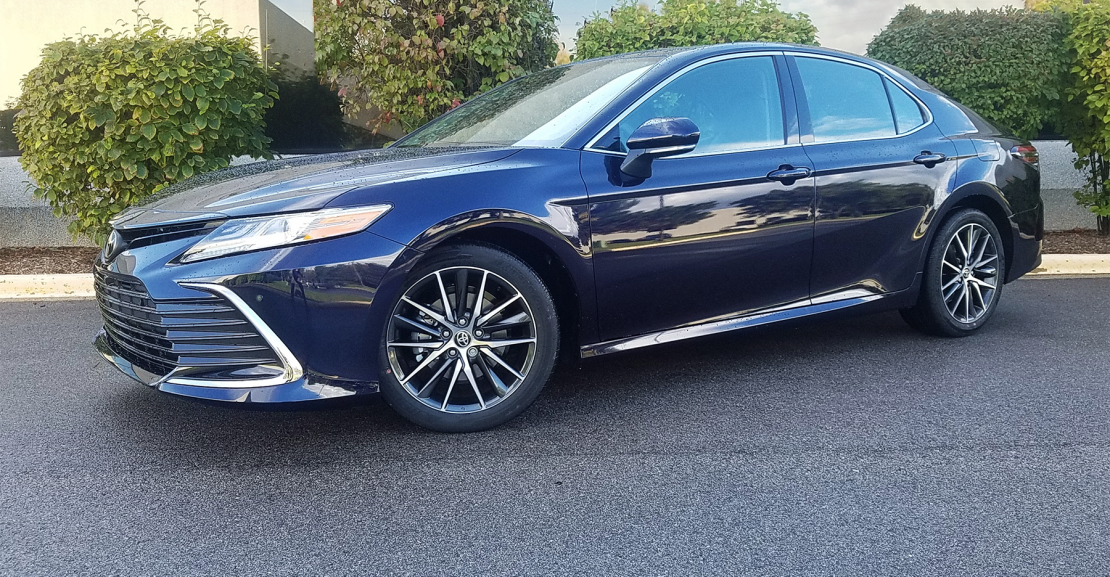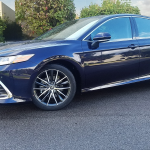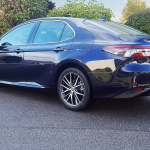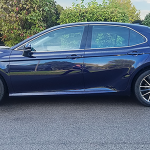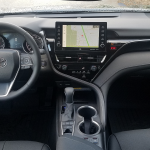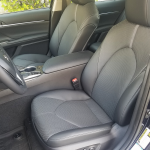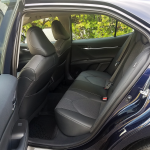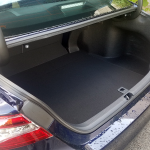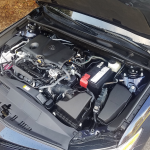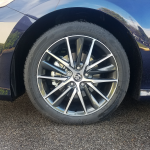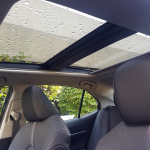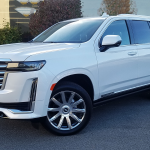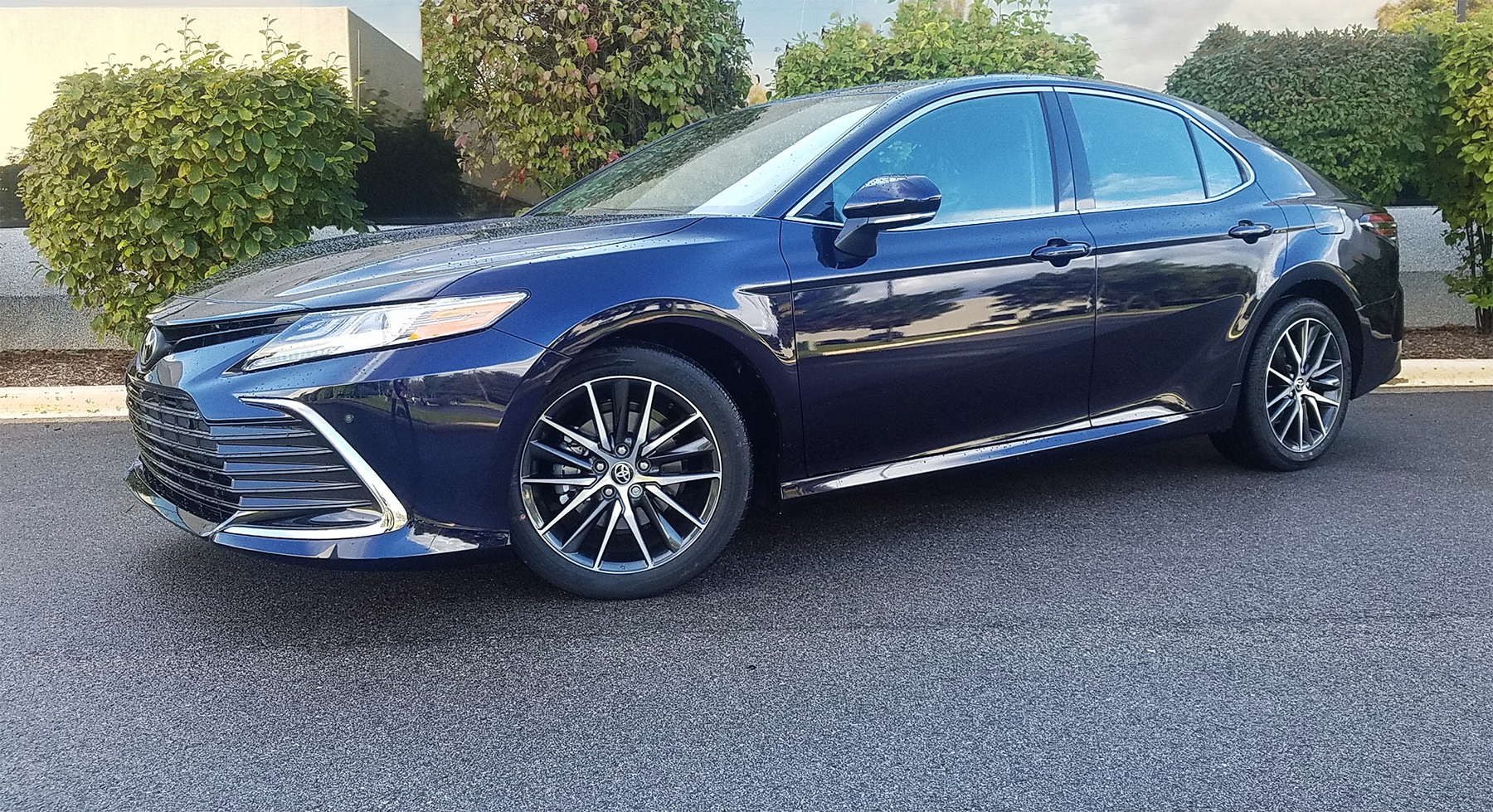

Seemingly undaunted by conventional wisdom that says the sedan is dead, Toyota is pressing ahead with a physically freshened and technologically improved Camry for 2021.
Toyota still sells plenty of these midsize passenger cars—indeed, it has been the country’s best-selling sedan for years. The current eighth-generation Camry dates to 2018, when the fully redesigned product line adopted a stiffer Toyota New Global Architecture platform and styling that attempted to shake off a reputation for innocuous blandness. The nameplate expanded its reach in 2020 with the additions of a performance-tinged V6-powered TRD model and an all-wheel-drive option.
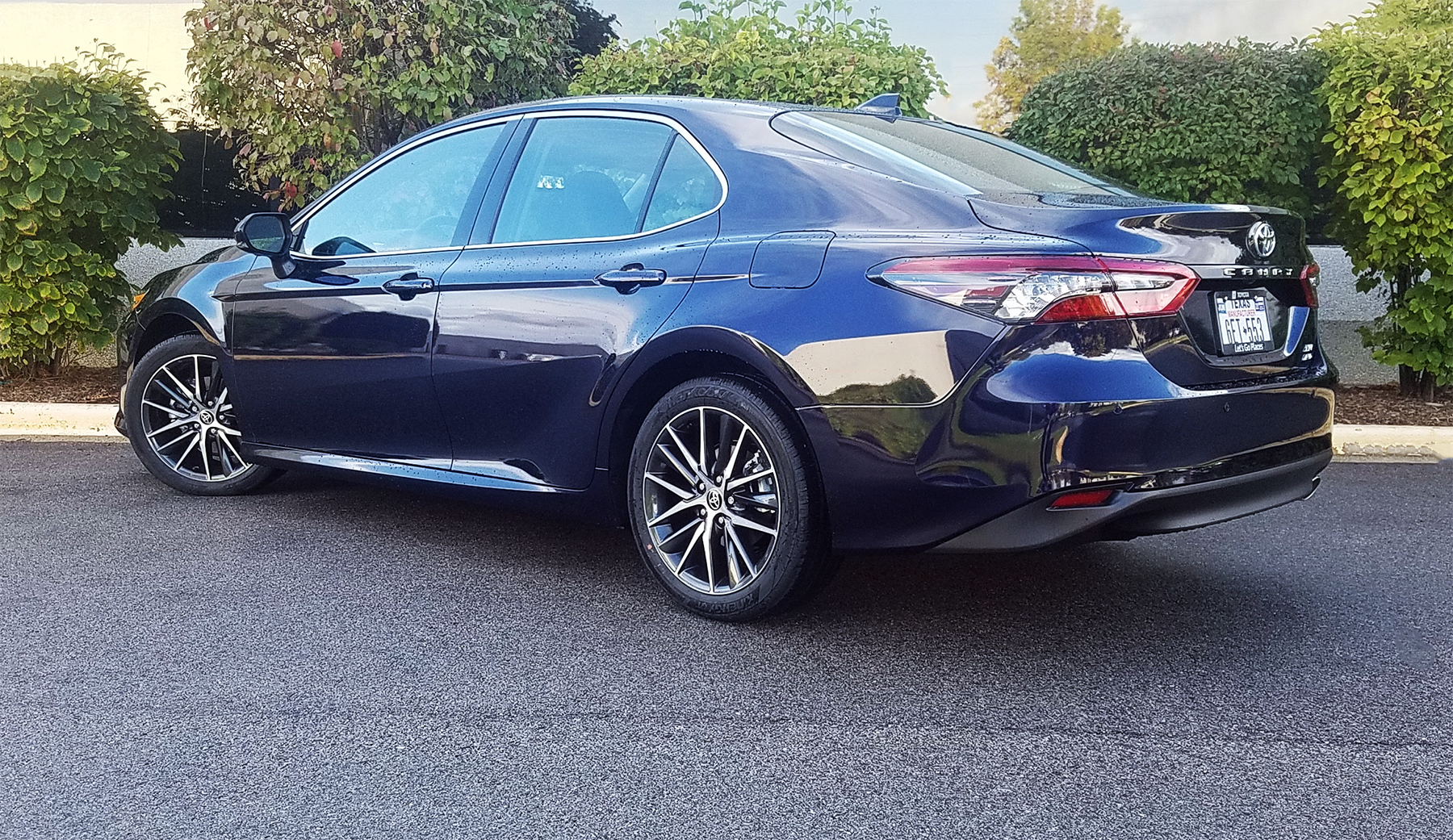
Among the highlights of the ’21 Camry are some give and take in the model hierarchy. The family of 4-cylinder gas-engine Camrys loses its entry-level front-wheel-drive L version; the LE is the new starter model there. Meanwhile, the hybrid branch of the family adds a line-topping XSE. The full 2021 lineup with base prices (including $995 delivery fee) looks like this:
- LE (FWD), $25,965
- LE (AWD), $27,365
- SE (FWD), $27,480
- SE (AWD), $28,880
- SE Nightshade (FWD), $28,180
- SE Nightshade (AWD), $29,580
- XLE (FWD), $30,865
- XLE (AWD), $32,265
- XLE V6 (FWD), $35,990
- XSE (FWD), $31,415
- XSE (AWD), $32,815
- XSE V6 (FWD), $36,540
- TRD (FWD), $33,180
- LE Hybrid (FWD), $28,265
- SE Hybrid (FWD), $29,780
- XLE Hybrid (FWD), $33,165
- XSE Hybrid (FWD), $33,715
All models come equipped with Toyota Safety Sense 2.5+, an updated suite of driver-assistance technologies that includes automatic emergency braking, pedestrian detection, lane-departure alert with steering assist, lane-tracing assist, automatic headlight high-beam control, road-sign recognition, and dynamic radar cruise control. The system can now detect a preceding bicyclist in the daytime and pedestrians in low-light situations. It also can provide alerts and emergency braking at intersections when an oncoming vehicle or pedestrian is detected during left turns. Those with the full-speed version of the cruise control (gas-engine XLEs and XSEs, TRD, and all Hybrids) are now designed for smoother passing of slower vehicles once the driver initiates a signaled lane change.
Test Drive: 2020 Toyota Camry TRD
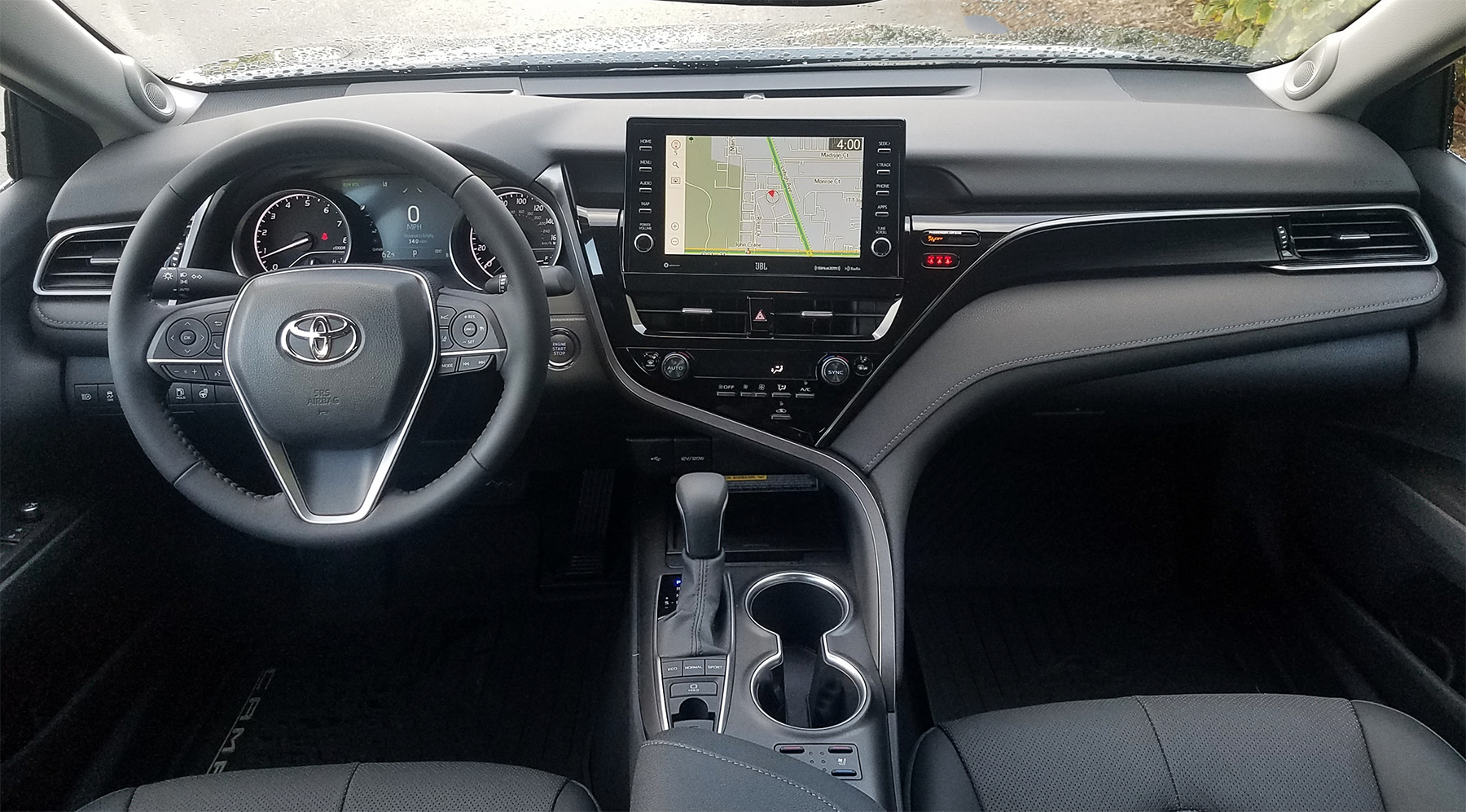
Outward appearances see the LE and XLE with a new front fascia that has a redone lower-intake area, plus new 17- and 18-inch wheel designs, respectively. Changes to the SE/XSE fascia feature are a recontoured bottom bar and side-vent grilles that match the honeycomb design of the main grille. Inside, the infotainment display screen moves out of the center of the dashboard to rise in the freestanding tablet style that has become popular throughout the auto industry in recent years. A 9-inch screen is found on all XLE- and XSE-trim models; others get a 7-inch screen. In addition, cabin accent trim is new, with linear dark moldings, wood inlays, or patterned metal depending on the model.
Test Drive: 2020 Nissan Altima SL AWD
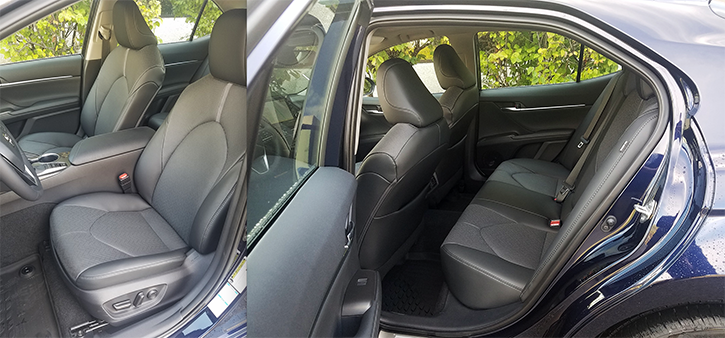
The rest of the Camry package, in terms of dimensions and powerteams, stands pat. The 2.5-liter “Dynamic Force” 4-cylinder engine in gas-only models makes 206 horsepower and 186 lb-ft of torque for the dual-outlet-exhaust XSE, but 203 horsepower and 184 lb-ft in other models. (With all-wheel drive, respective horsepower ratings are lower by one.) The 3.5-liter V6 is rated at 301 horsepower and 267 lb-ft. Both are paired with an 8-speed automatic transmission. Hybrids depend on a 176-horse/163-lb-ft version of the four plus a 118-horsepower electric motor fed by a lithium-ion battery located under the rear seat to generate a total system output of 208 horsepower. Hybrid power is channeled through an electronically controlled continuously variable transmission with “manual-shift” capability either through steering-wheel paddles or the console lever. EPA fuel-economy ratings for SE, XLE, and XSE hybrids are 44 mpg in the city, 47 mpg on the highway, and 46 combined, but respective figures for the LE are 51, 53, and 52.
In Defense of the Sedan: A Minneapolis Family Road Trip in the 2019 Mazda 6
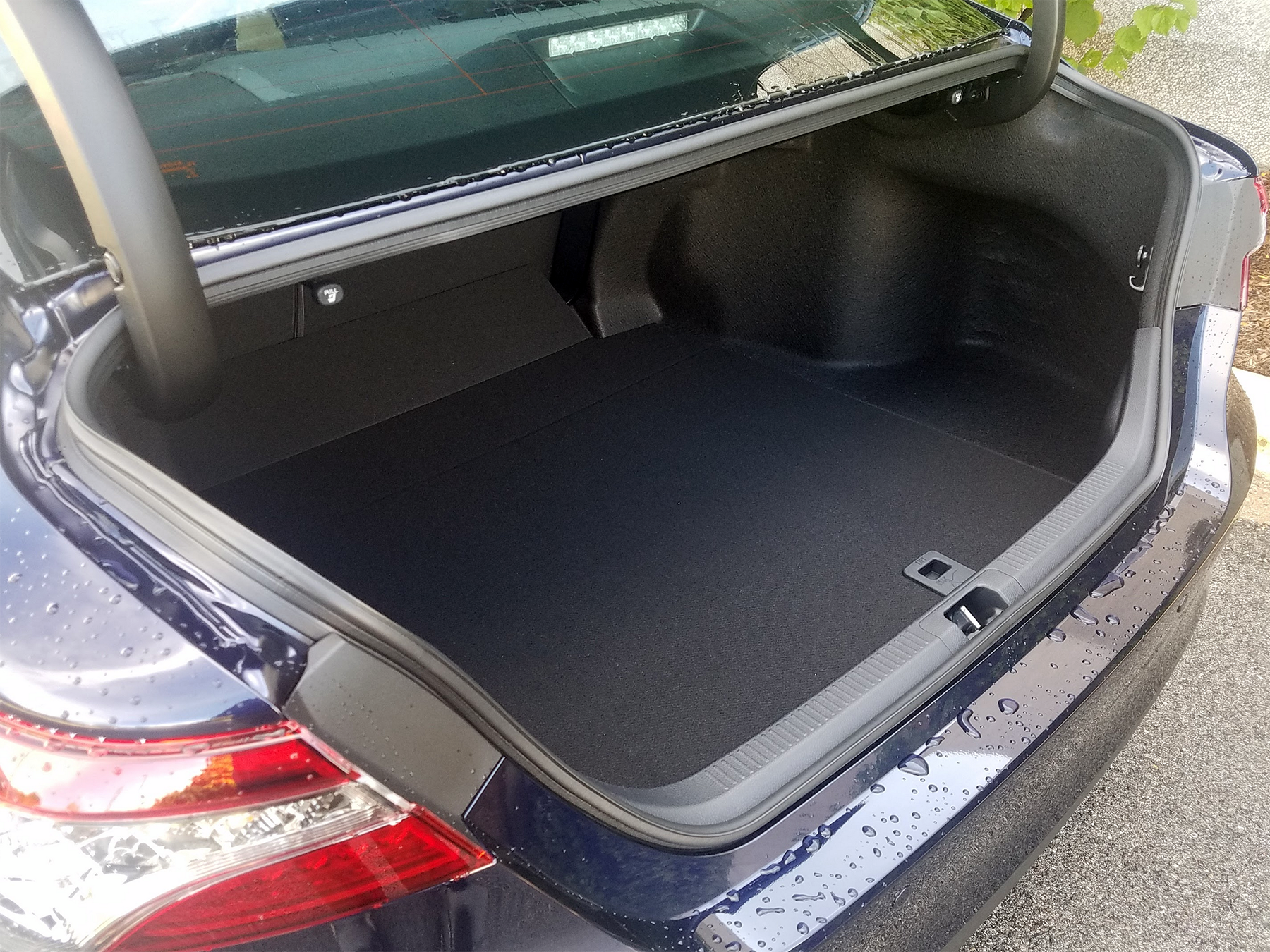
Aside from items already mentioned, LE buyers get color-keyed power exterior mirrors, manual air conditioning (except on Hybrid, where dual-zone automatic climate control is standard), 4.2-inch vehicle-information display, fabric-upholstered seats, 8-way power-adjustable driver’s seat, 60/40-folding rear seat with center armrest and cup holders, remote keyless entry (and push-button starting on Hybrid), 6-speaker audio system, satellite radio, and Android Auto/Apple CarPlay/Amazon Alexa compatibility.
SEs add a black “sport mesh” grille, color-keyed sport rocker panels and rear spoiler, single-zone automatic climate control, tire-pressure monitoring system, leatherette-and-fabric seat trim, and leather-trimmed steering wheel. SE Nightshades have additional exterior black highlights. XSEs adds to the SE’s sporty feel with LED headlights, touch-sensor exterior door handles, quad-tip dual exhaust, dual-zone automatic climate control, wireless charging, 7-inch vehicle-info display, leather upholstery, 8-way power passenger seat, heated front seats, “Eco”/“Normal”/“Sport” driving modes, push-button starting, auto-dimming rearview mirror, ambient interior lighting, blind-spot monitor, and rear cross-traffic alert. The XSE V6 also comes with a panoramic moonroof, head-up display, and 9-speaker JBL audio. XSE Hybrid lacks the dual exhaust but has an extra “EV” driving mode.
The luxury-focused XLE lacks the XSE’s rocker panels and deck spoiler, but features a bright-accented grille, and the V6 has dual single-tip exhausts. TRD specifics include a specially tuned cat-back exhaust system, aero kit with front air splitter, lower stance on a stiffened suspension, larger disc brakes with red calipers, and red interior highlights—even on the instruments.
Test Drive: 2020 Hyundai Sonata Hybrid Limited
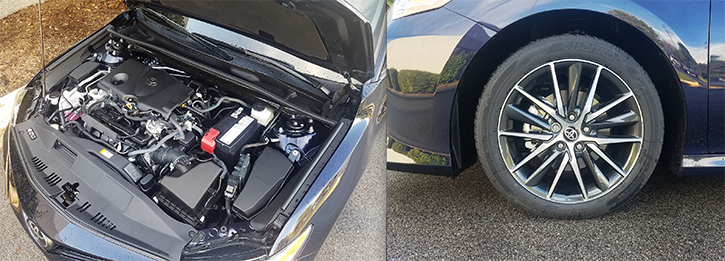
Consumer Guide’s first exposure to the 2021 Camry was shorter than one of its usual vehicle tests, confined to a single weekend with a pre-production XLE with all-wheel drive. Even with the added weight (approximately 165 pounds) that comes with AWD, overall performance remained close to what we’ve experienced in the front-drive 4-cylinder Camry: decent acceleration from a stop and easy highway cruising with good passing and merging power. There’s slightly quicker response from Sport mode, with modestly firmer steering, too. As for ride, the XLE is tuned for comfort, but it’s not overly soft on its 18-inch wheel-and-tire package. Topping off after 73 miles (60 percent in city driving) worked out to 24.1 mpg, which is not superlative. EPA estimates for this model are 25 mpg in city driving, 34 in highway operation, and 28 combined.
We can’t fault the interior room and comfort, or the fit and finish. The infotainment system—optioned up to the premium audio with navigation in the test car—was fairly easy to work, but for the time-consuming wait for station lists to load before we could input radio presets. Even though the screen placement has been changed, it still has handy surface buttons at the sides like the old unit had. The trunk is big—a couple’s weekly grocery haul almost looked lost back there—but when the rear seats are retracted for added space, they rest a few inches above the level of the trunk floor.
The changes made to the 2021 Camry represent a measured stride, not a great leap forward. However, there’s no sign that Toyota has lost a step in the midsize-sedan field.
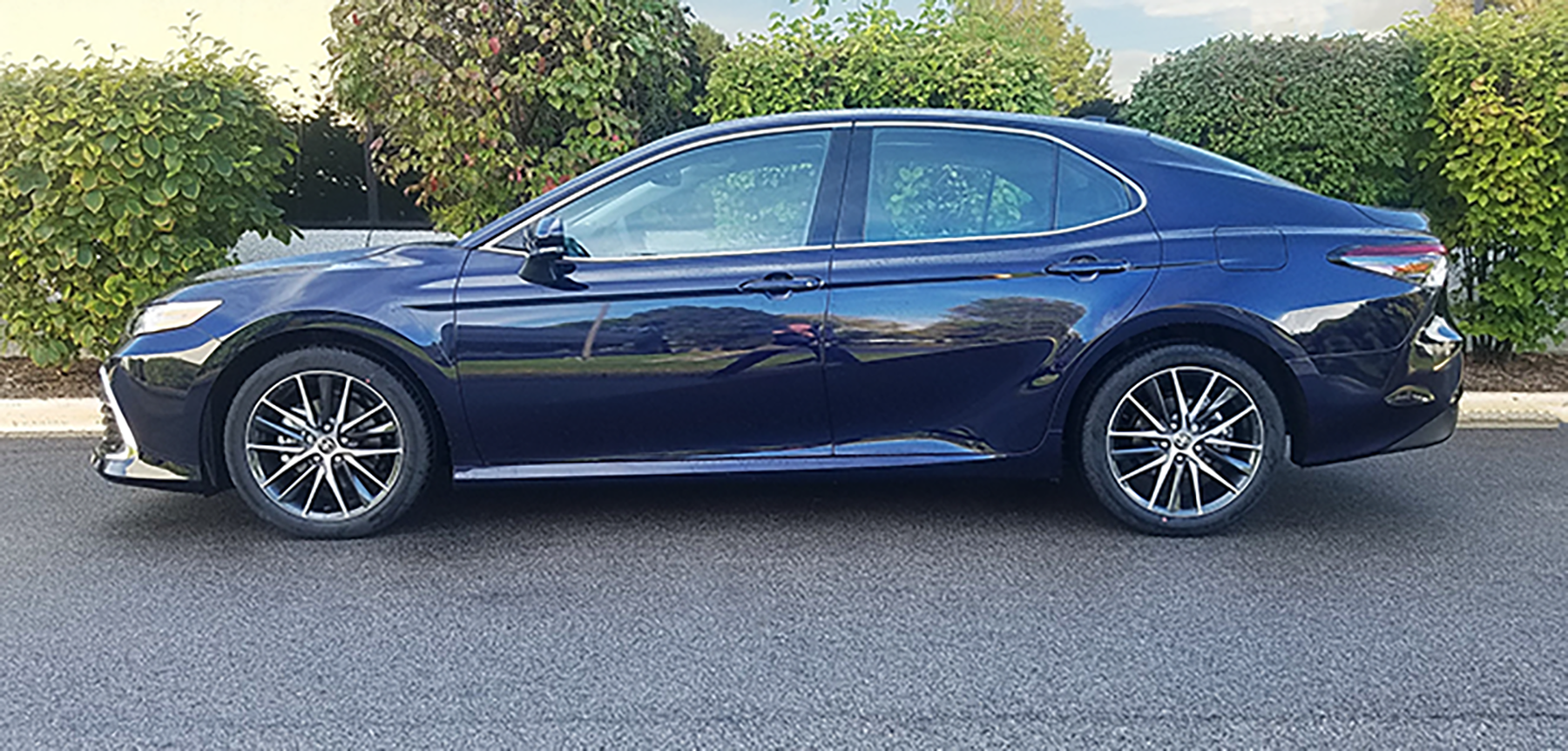
Click below for enlarged images
Listen to the very entertaining Consumer Guide Car Stuff Podcast
2021 Toyota Camry Gallery
2021 Toyota Camry

